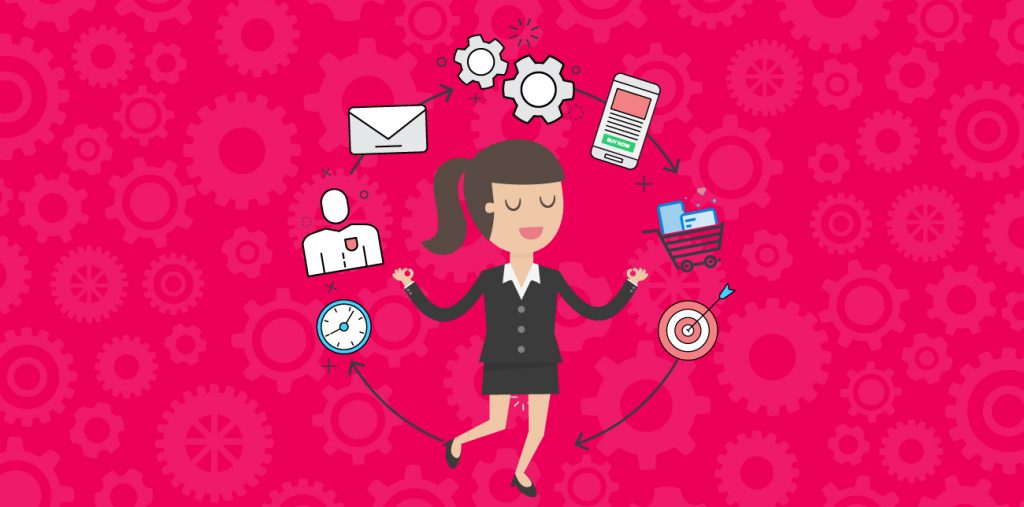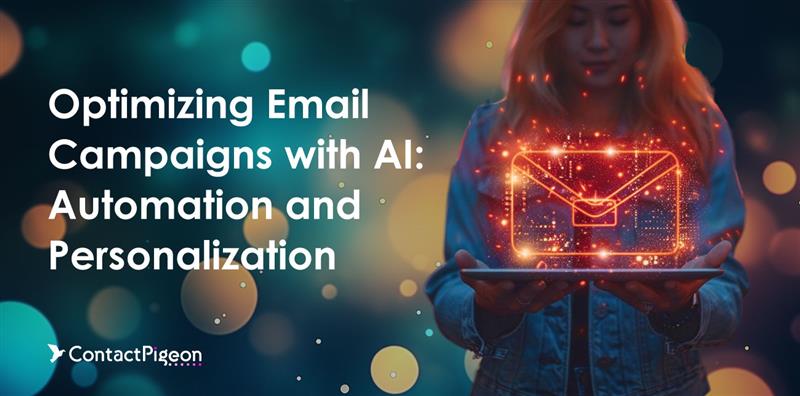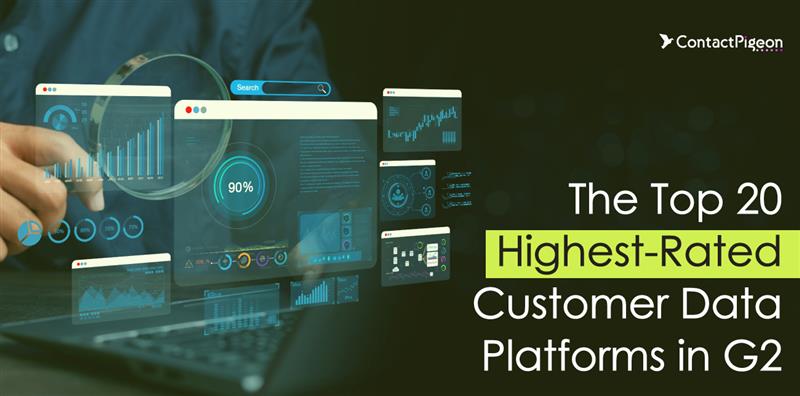2019 Update: We released a detailed eCommerce Marketing Automation guide. You can read it here.
In a recent article, we discussed the rising role of marketing campaign automation in e-commerce marketing due to the tremendous benefits it has on e-commerce sales. In this post, along with the two subsequent articles as part of our Marketing Automation trilogy, we dive deeper to explore the essential e-commerce automation workflows that nurture leads, optimize conversions and increase returning customers. We start by addressing the number ONE concern of all e-Commerce marketers – converting web visits to sales. So, let’s dive right in.
The eCommerce conversion challenge
Let’s face it, getting visitor conversion is tough. Even after you’ve worked hard on getting the right visitor and optimizing on their website experiences, there is still a significant percentage of the visitors who do not fully convert. Studies show that 93% of website visitors abandon website after browsing, and another 5% leave after putting items in a cart without completing checkout. In an increasingly competitive landscape where the next store is just one click away, the e-commerce challenge has been exacerbated. However, given the significant volume of visitor abandonment, it’s also the biggest opportunity area to tackle with marketing campaign automation.
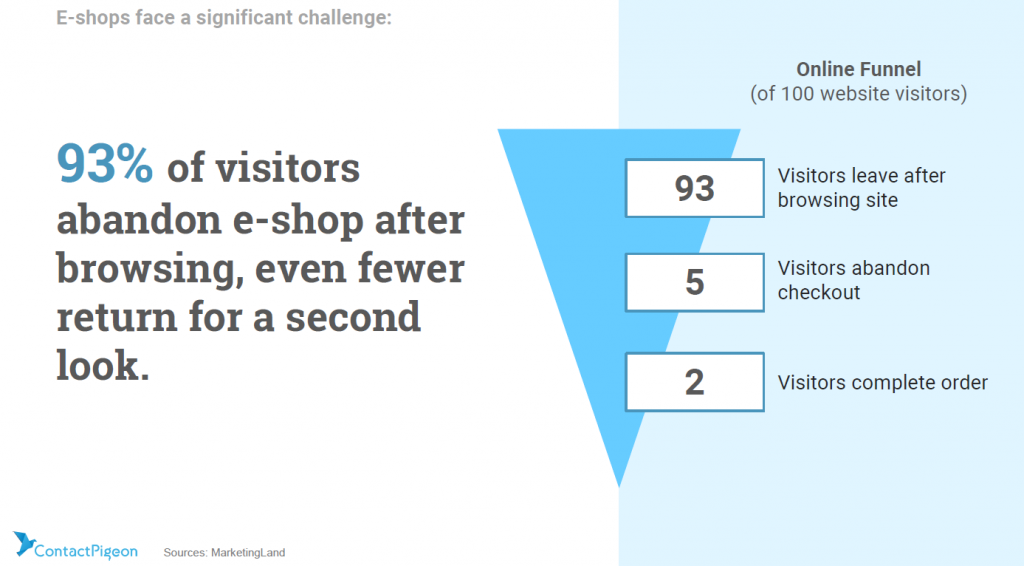
The e-commerce challenge – moving visitors thru the online shopping funnel with marketing campaign automation.
3 ways to optimize conversions with marketing campaign automation
Technology nowadays allows eCommerce marketers to monitor visitor behaviors across the website. By gaining access to data on what works and what doesn’t for visitors both on and off site, you have the ability and the means to bring back a handful of lost conversions. By offering your visitors the right amount form of guidance, a friendly reminder or suitable product recommendations, you can seriously increase chances to recoup lost sales with minimal incremental cost.
1. Browse abandonment reminder
An abandoned browse reminder works on re-engaging a visitor who has left the e-commerce site after browsing a few products.
The core idea is rather simple. After a contact has left your site, she is added to an abandoned visitor list. If she doesn’t return to the site after a period of time, you can automatically trigger an email campaign featuring the products or product categories she has viewed, along with suggestions of similar products to expand the selection options. This form of triggered email campaigns works charmingly well to recapture the visitors who are still in the decision phase. By visually displaying a product the visitor has demonstrated interests in, you naturally increase the impulse to shop and, consequently, the conversion to sales.
As a result, browse abandonment reminders helps you achieve better outcomes. On average, ContactPigeon’s clients have seen improvements such as:
- Open rate: 39%
- Clicks thru rate: 10%
- Conversions: 1~2%
Compared to online paid remarketing ADs, email marketing campaign automation such as browse reminders is more cost effective in achieving similar conversions, particularly when you already have the contact emails.
What does a Browse Abandonment reminder look like?
As an example, see how J.Crew approaches a visitor who abandoned a website after browsing for a specific category – shoes:
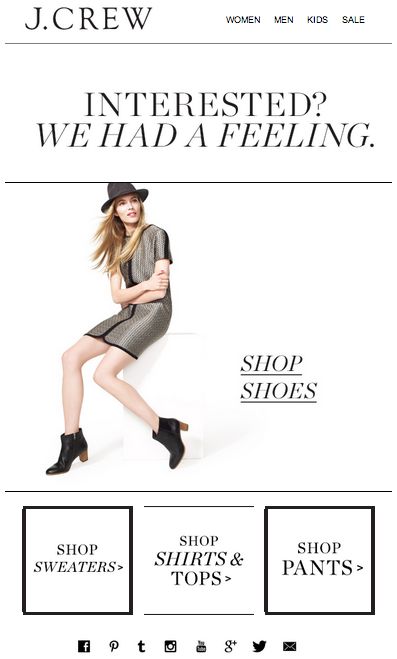
J.Crew browse abandonment email example
J.Crew’s email template is thoroughly designed in a way that helps to reinforce its brand characteristics. The tone of voice is simple but witty, tailored to the visitor’s actions without deviating from its voice. The layout is clean cut, minimalistic and fresh – exactly what the brand represents. Moreover, the call to action button is hard to miss and there are alternative category recommendations further down the page.
When should Browse Abandonment reminders be triggered?
The answer depends mainly on the type of products your e-shop is selling since that dictates how long, on average, a customer needs to make a purchase decision. Typically, low-costs and high-frequency consumable products (e.g., t-shirts, pet food, makeup, etc) have a much shorter time span. Consequently, best practice suggests that browse abandonment reminders are most effective when triggered within 24 hours after visitor abandons browse. This allows you to recapture the opportunity before the potential customer buys from a competitor.
Alternatively, high cost and slower moving products such as luxury items or furniture can afford a longer campaign period to allow for better research and product education before the customer commits to a purchase decision. In this case, the campaign period can be as long as one-week post abandonment before the reminder is triggered.
2. Abandoned cart reminders
Cart abandonment is one of the first eCommerce ‘maladies’ that were ever treated. The scenario is straightforward: the visitor browses items, adds products to their cart, and leaves the website before completing checkout. Similar to the browse abandonment reminder, a triggered campaign reminding the visitor of what she has left behind has proven to work in recouping sales. In the case of the abandoned cart, the potential customer is even further down the shopping funnel (closest to completing a checkout), hence the likelihood of converting the customer is much higher with a simple yet persuasive email reminder.
As such, average results from abandoned cart marketing automation campaigns are surprisingly high:
- Open rate: 43%
- Clicks thru rate: 12%
- Conversions: 2-3%
What does an Abandoned Cart reminder look like?
Let’s borrow an example from the travel sector. The Millennium hotel sends a triggered email “gently” reminding you of the room you picked but have not yet reserved.
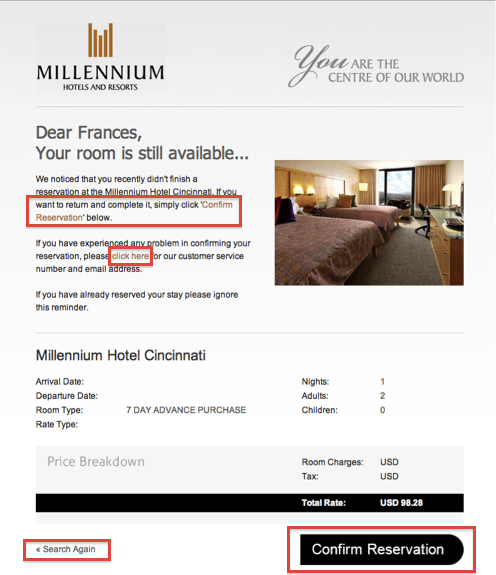
An effective way to remind visitors on reservation not completed.
The email from Millennium exemplifies a few elements that worked well for abandoned cart reminder:
- Personalized greeting. Note that the email starts off addressing the visitor by his name, Frances. This draws reader’s attention and immediately establishes a personal connection.
- Highlights the product of interest. In this case, the room that Frances is trying to book. The email does that by noting the room’s availability, a subtle yet powerful suggestion that the current availability may be temporary. The Millennium further enhances the message by adding a visual reminder the room.
- Clear Call to Action. The confirmation button is distinguished in size and color to draw attention. Furthermore, the body of the email clarifies the call to action by noting the ease of 1-click action.
- Offer alternative and guidance. Cart abandonment can occur for multiple reasons. This example accounts for the possibilities in two ways – offering customer support for any booking issues and suggesting alternative options vis “Search Again” button. For eCommerce, comparable alternatives may be similar products or offering complimentary shipping & returns, for visitors who may have concerns on shipping quality.
When should Abandon Cart reminders be triggered?
Given that visitors who abandoned cart have passed the primary stage of window shopping and is close to a purchase, optimal timing for the reminder should be closer to the time of abandonment. Hence sending a reminder within 24 hours or even sooner after the visitor becomes inactive from your site guarantees optimal conversion.
The ContactPigeon differentiator
While there are many tools offering eCommerce abandon cart (including built-in features from eCommerce platforms such as BigCommerce and Shopify), ContactPigeon offers the next level capability for capturing abandoned visitors.
One way we accomplish higher conversion is by incorporating known visitors who have not yet signed in to your website. A large percentage of your visitors may browse, add items to cart, and leave, without ever signing in or reaching the check out page. ContactPigeon has the advantage to identify those visitors and trigger abandon cart reminders for this population. As a result, you gain a significantly wider reach when it comes to retargeting the abandoned visitors.
3. Additional conversion boosters
“Price drop” and “Soon out of Stock” alerts are additional examples of effective triggered email campaigns. The two work well as standalone campaigns, but their conversion potency magnifies when combined with the abandonment reminders.
Price Drop alerts – everyone loves a good sale
The price drop campaign is triggered automatically whenever an item’s price decreases by a specified percentage (e.g., 10%). When used in conjunction with browse abandonment or abandoned cart reminders, the combination effectively nudges any visitors on the edge of the decision towards action.
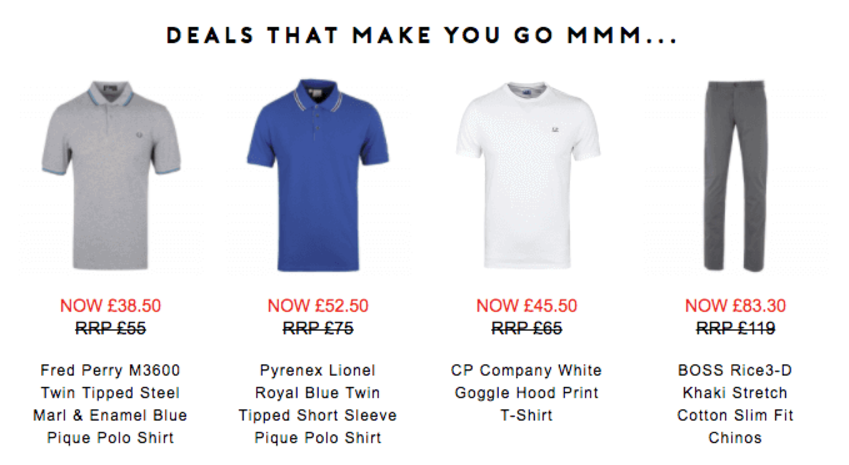
An example of price drop reminder elements for recouping visitor abandonment.
The price drop emails should feature the product viewed (or added to cart) and highlight the pricing difference. Another great option is to recommend products in similar categories that have gone on sale. This way, you increase the chance of making a cross sell based on visitor interests.
Soon out of stock – build on the FOMO factor
Since ContactPigeon synchs with your product category, the platform has the ability to monitor inventory level of the items. Another effective way to boost conversions is the “Soon out of stock” alert. This is triggered automatically when inventory level drops under a specified threshold. By highlighting the fact that the product may run out soon, it plays on the customers’ fear of missing out and pushes them to a purchase sooner.
Marketing campaign automation is complementary to a healthy business
To sum it up, marketing campaign automation is an effective way to fight visitor abandonment and recoup additional sales opportunity. By taking actions on specific events triggers (e.g., abandoned views, price drops) that are meaningful to your business, you benefit on conversion optimization. At the same time, leveraging the power of campaign automation enhances the overall shopping experience for your visitors, and thereby increasing your customer lifetime value.

